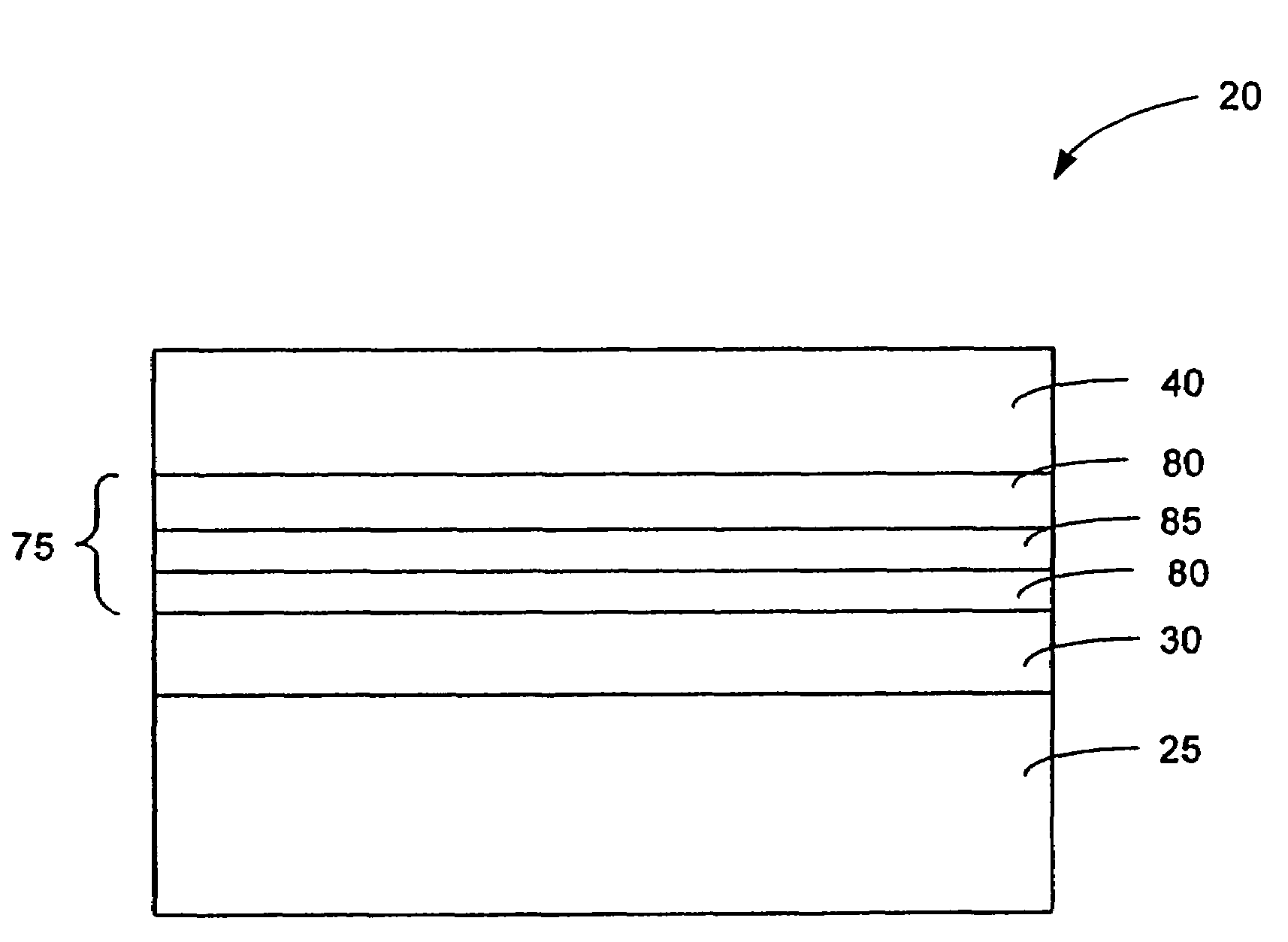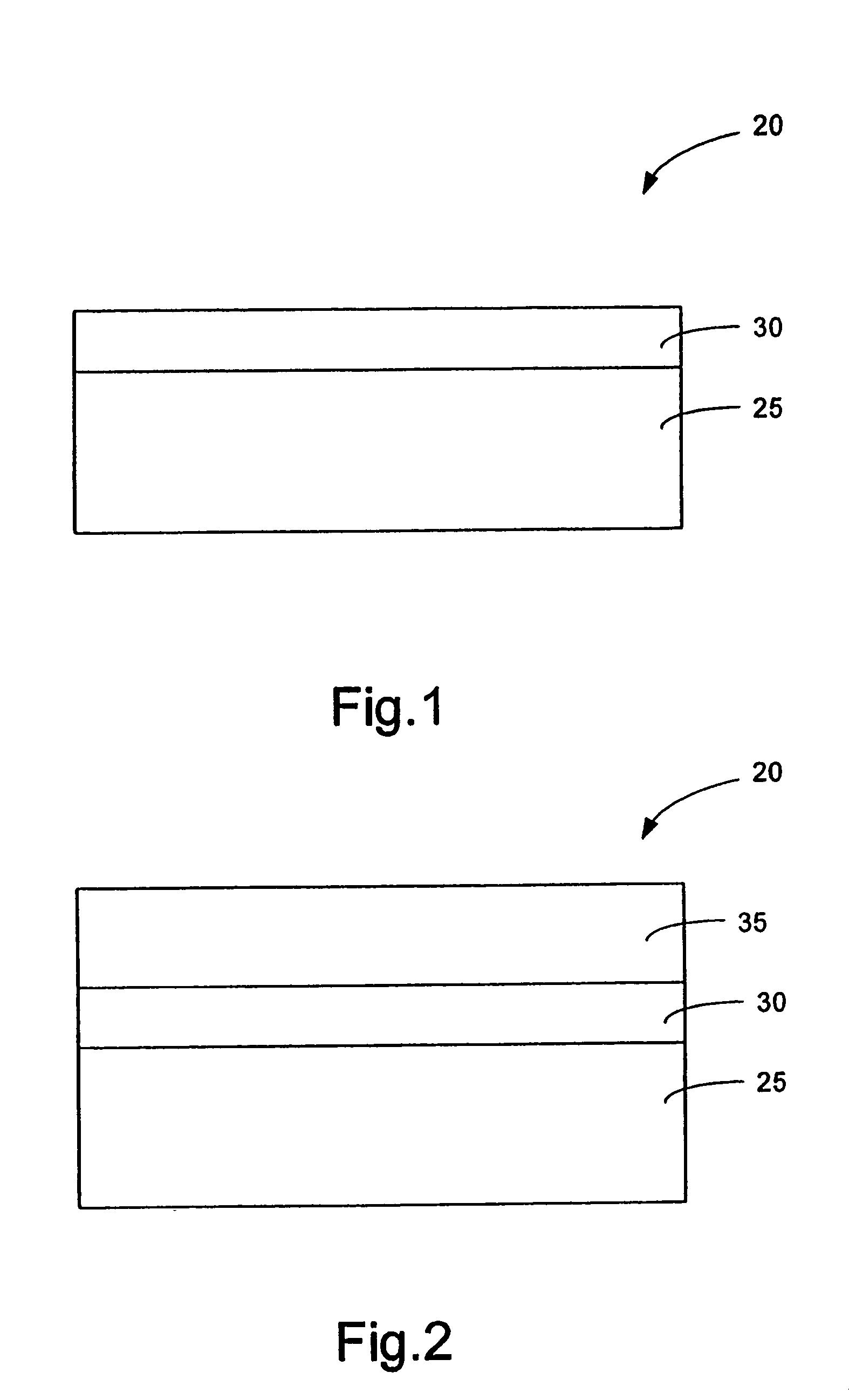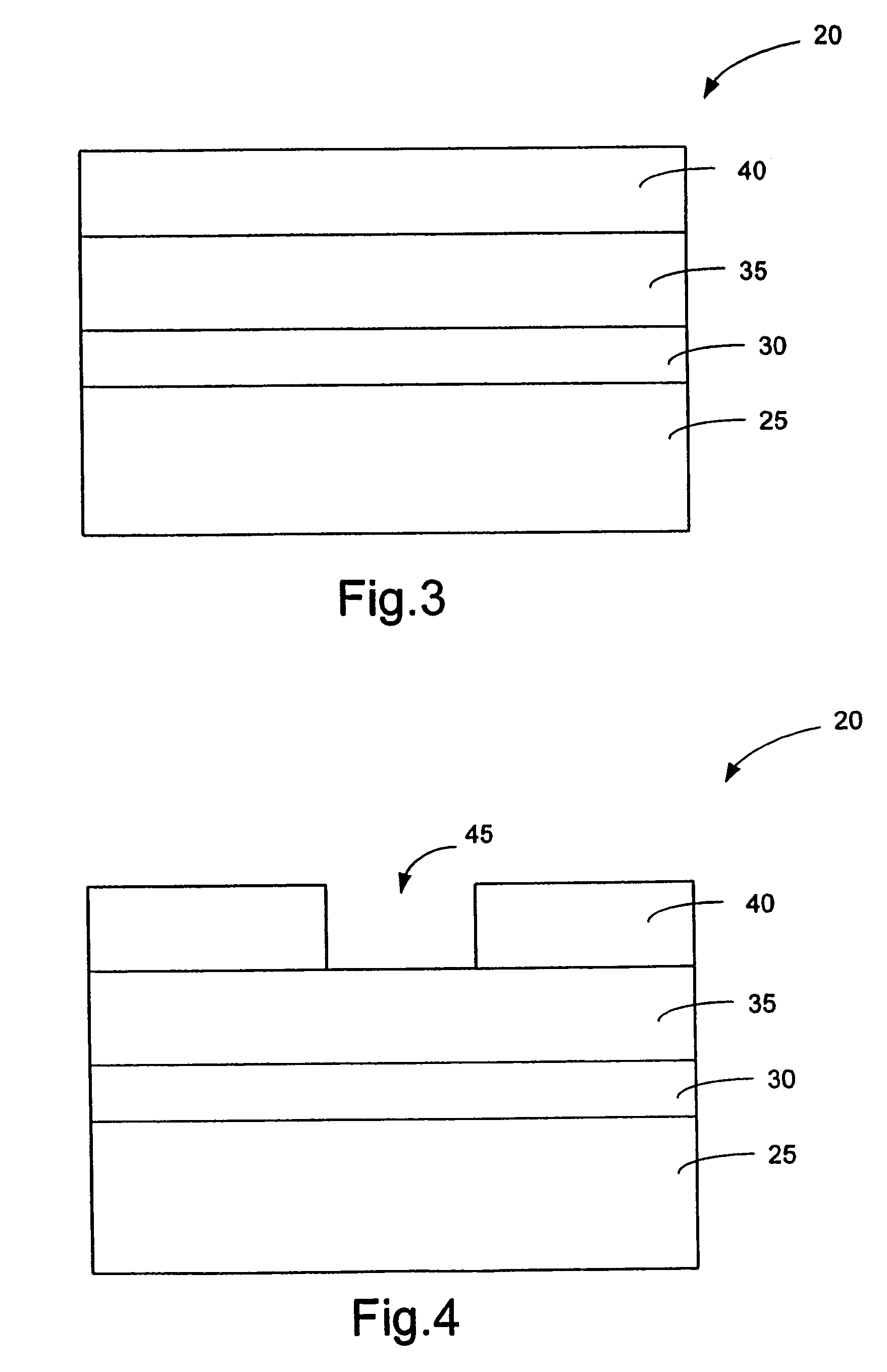Shallow trench isolation using antireflection layer
a technology of antireflection layer and trench layer, which is applied in the direction of semiconductor/solid-state device details, electrical equipment, semiconductor devices, etc., can solve the problems of increasing noise among devices on the chip, reducing the reflectivity of the entire chip, and difficulty in maintaining tight cd control, etc., to achieve the effect of reducing the reflectivity, reducing the variance of reflectivity, and simplifying the manufacturing process
- Summary
- Abstract
- Description
- Claims
- Application Information
AI Technical Summary
Benefits of technology
Problems solved by technology
Method used
Image
Examples
Embodiment Construction
[0030]The present invention will now be described with respect to the accompanying drawings in which like numbered elements represent like parts.
[0031]In order to create shallow trench isolation (STI) among components disposed on a wafer with tight critical dimension (CD) control, the present invention provides a silicon rich nitride layer to serve as both a hardmask and an anti-reflective layer during the manufacturing process. In the present invention, the silicon rich nitride layer has a extinction coefficient (k)>0.5. By forming the hardmask of a silicon rich nitride layer, light which is reflected by the semi-conductor substrate and other material during photo-lithographic patterning of the photoresist substantially is absorbed by the silicon rich nitride layer. Thus, thickness variations in the silicon rich nitride layer do not result in non-uniform amounts of light being incident on the photoresist which in turn could result in distortions during photoresist patterning.
[0032]...
PUM
 Login to View More
Login to View More Abstract
Description
Claims
Application Information
 Login to View More
Login to View More - R&D
- Intellectual Property
- Life Sciences
- Materials
- Tech Scout
- Unparalleled Data Quality
- Higher Quality Content
- 60% Fewer Hallucinations
Browse by: Latest US Patents, China's latest patents, Technical Efficacy Thesaurus, Application Domain, Technology Topic, Popular Technical Reports.
© 2025 PatSnap. All rights reserved.Legal|Privacy policy|Modern Slavery Act Transparency Statement|Sitemap|About US| Contact US: help@patsnap.com



